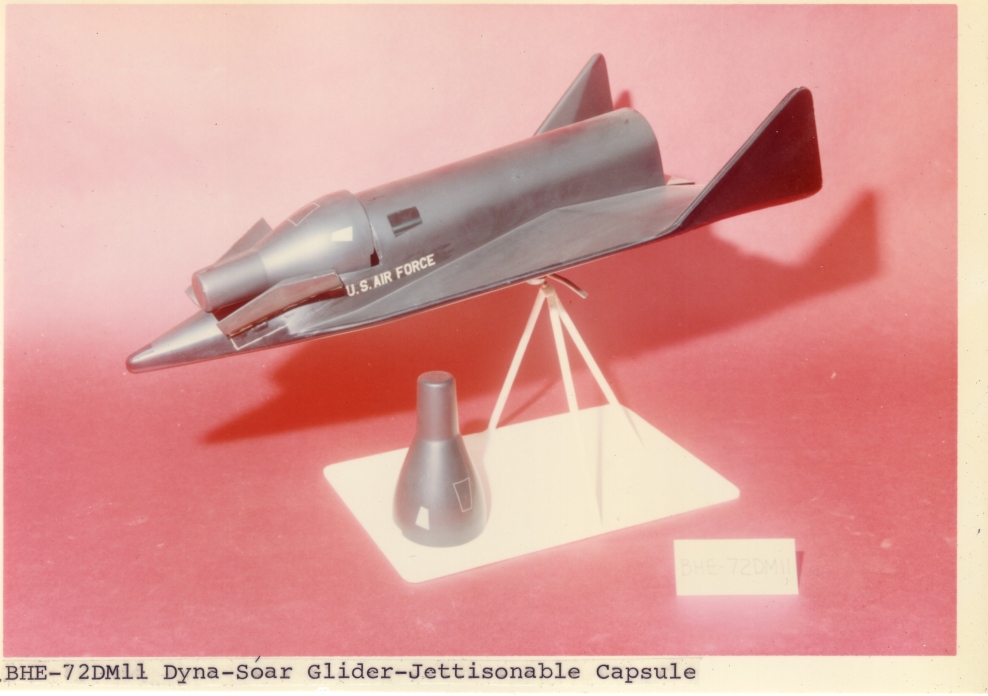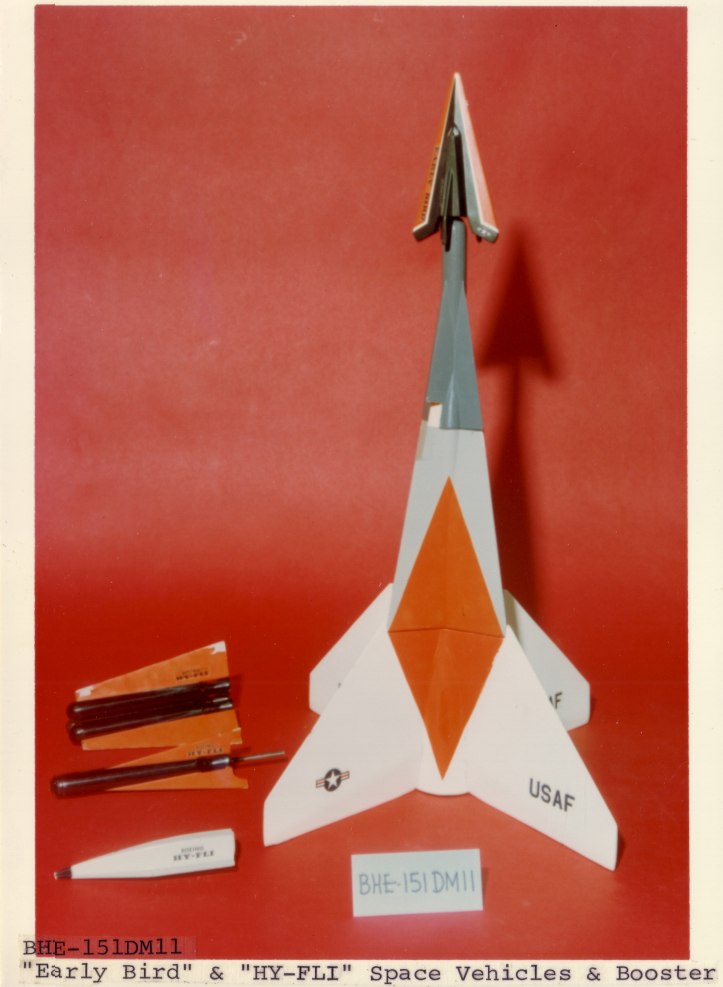In 1959 Boeing briefly studied using the Mercury capsule or a derivative as the cockpit of the Dyna Soar. At the time, the cockpit of the Dyna Soar was intended to be ejectable in the event of an emergency, in a manner similar to the cockpit of the F-111. However, unlike the F-111 cockpit capsule, the Dyna Soar ccokpit was meant to be capable of suriving re-entry. The use of a Mercury capsule would give the Dyna Soar a cockpit with verified ability to survive re-entry… with, of course, some major concessions regarding vehicle shape, weight and growth potential.
Drawings soon.




























